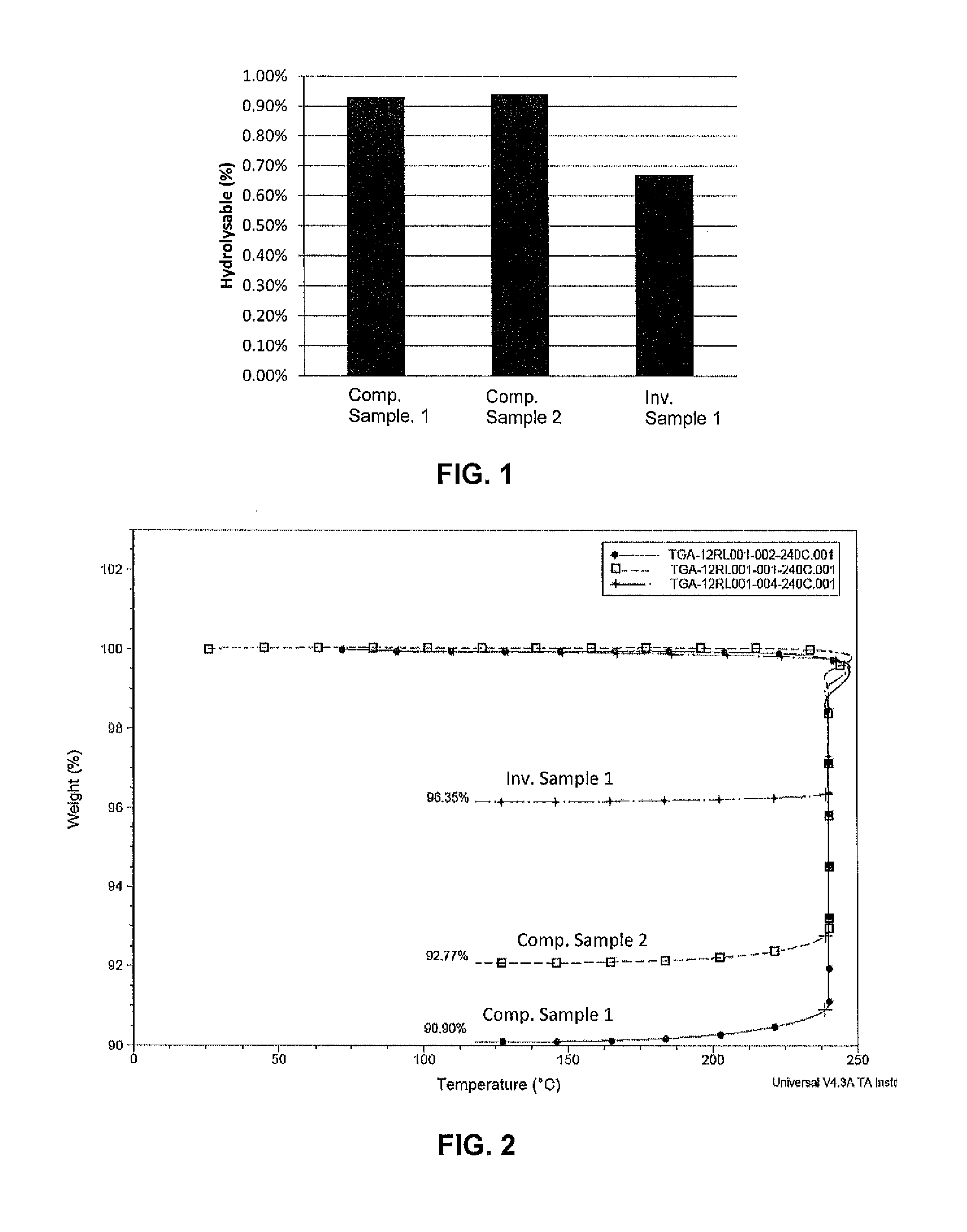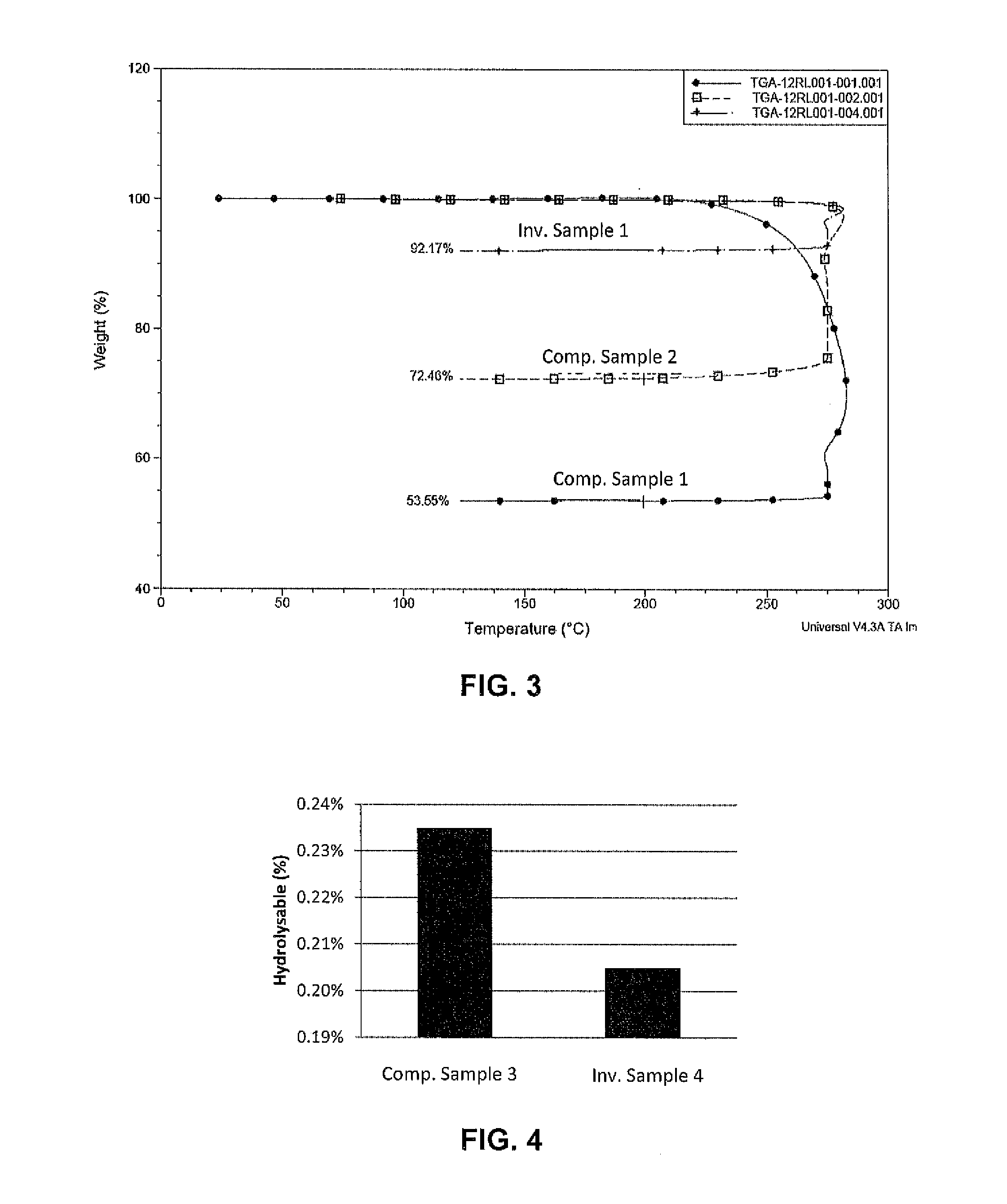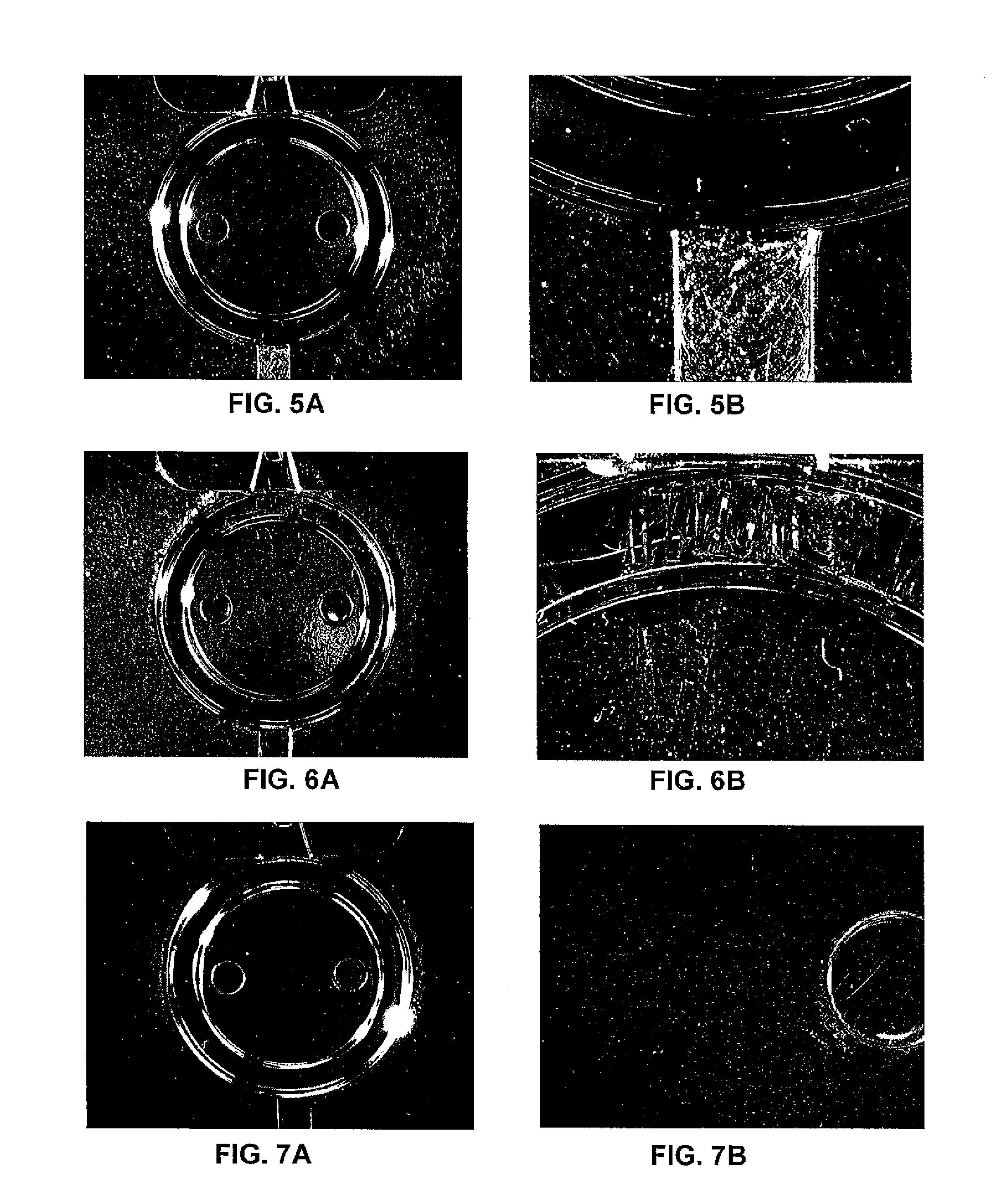Low Emission Polyoxymethylene
a technology of polyoxymethylene and low-emission, applied in the field of low-emission polyoxymethylene, can solve the problems of increasing environmental health concerns, unpleasant odor, and and achieve the effect of reducing the voc emission
- Summary
- Abstract
- Description
- Claims
- Application Information
AI Technical Summary
Benefits of technology
Problems solved by technology
Method used
Image
Examples
examples 1-6
[0132]Silane Compounds:
[0133](3-aminopropyl)triethoxy silane (ATEO) was utilized as an amino functional silane compound.
[0134](3-mercaptopropyl)trimethoxy silane (MTMO) was utilized as a mercapto functional silane compound.
[0135]Octyl triethoxysilane (OTEO) was utilized as an alkyl silane compound.
[0136]Lubricant: N,N′-ethylene bis-stearamide wax.
[0137]Antioxidant: triethyleneglycol-bis[3-(3-t-butyl-4-hydroxy-5-methyphenyl)propionate
[0138]Formaldehyde Scavengers:
[0139]a. Benzoguanamine (2,4-Diamino-6-phenyl-1,3,5-triazine).
[0140]b. copolyamide
[0141]c. 5-ureidohydantoin
[0142]Stabilizer: tricalcium citrate acid
example 1
[0144]A mid molecular weight polyoxymethylene, Hostaform® HS90 (HF HS90), available from Ticona Engineering Polymers of Florence, Ky. was utilized to form polyoxymethylene compositions as described in the table below. The components as described below were mixed in a Werner Pfleiderer ZSK 32 co-rotating intermeshing twin-screw extruder with a 32 mm diameter. Samples were molded on a Mannesmann Demag D100 NCIII injection molding machine.
Comp.Comp.Inv.ComponentSample 1Sample 2Sample 1Lubricant0.20%0.20%0.20%Antioxidant0.3%0.3%0.3%Benzoguanamine—0.5%—Stabilizer0.05%0.05%0.05%Nucleant0.50%0.50%0.50%MTMO——0.50%POM98.95%98.45%98.45%FORMULATION % TOTAL100.0%100.0%100.0%
[0145]The compositions and tensile bars formed of the compositions were tested for a variety of physical characteristics. Results are provided in the table below:
Comp.Comp.Inv.Sample 1Sample 2Sample 1Melt Index (g / 10 min)8.038.207.94Tensile Modulus (50 mm / min) (MPa)318930103081Tensile Break Stress (50 mm / min)69.2664.9166.34(...
example 2
[0150]A mid molecular weight polyoxymethylene, Celcon® M90 (CN M90) available from Ticona Engineering Polymers of Florence, Ky. was utilized to form polyoxymethylene compositions as described in the table below. The components as described below were mixed in a Werner Pfleiderer ZSK 32 co-rotating intermeshing twin-screw extruder with a 32 mm diameter. Samples were molded on a Mannesmann Demag D100 NCIII injection molding machine
Comp.Inv.Inv.Inv.Inv.Inv.ComponentSample 3Sample 2Sample 3Sample 4Sample 5Sample 6Lubricant0.20%0.20%0.20%0.20%0.20%0.20%Antioxidant0.3%0.3%0.3%0.3%0.3%0.3%Benzoguanamine0.5%—————Stabilizer0.05%0.05%0.05%0.05%0.05%0.05%Nucleant0.50%0.50%0.50%0.50%0.50%0.50%ATEO—0.50%0.10%———MTMO———0.50%——OTEO————0.50%0.10%POM98.45%98.45%98.85%98.45%98.45%98.85%FORMULATION % TOTAL100.0%100.0%100.0%100.0%100.00%100.00%
[0151]The compositions and tensile bars formed of the compositions were tested for a variety of physical characteristics. Results are provided in the below table...
PUM
| Property | Measurement | Unit |
|---|---|---|
| melt flow index | aaaaa | aaaaa |
| Gardner Yellowness Index | aaaaa | aaaaa |
| Gardner Yellowness Index | aaaaa | aaaaa |
Abstract
Description
Claims
Application Information
 Login to View More
Login to View More - R&D
- Intellectual Property
- Life Sciences
- Materials
- Tech Scout
- Unparalleled Data Quality
- Higher Quality Content
- 60% Fewer Hallucinations
Browse by: Latest US Patents, China's latest patents, Technical Efficacy Thesaurus, Application Domain, Technology Topic, Popular Technical Reports.
© 2025 PatSnap. All rights reserved.Legal|Privacy policy|Modern Slavery Act Transparency Statement|Sitemap|About US| Contact US: help@patsnap.com



